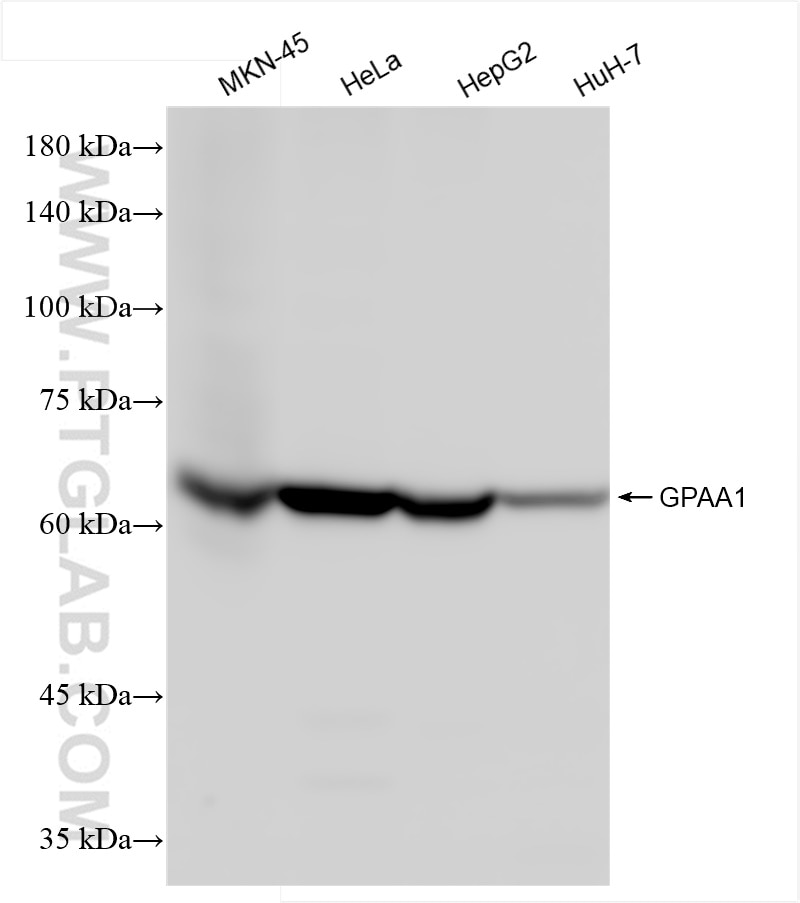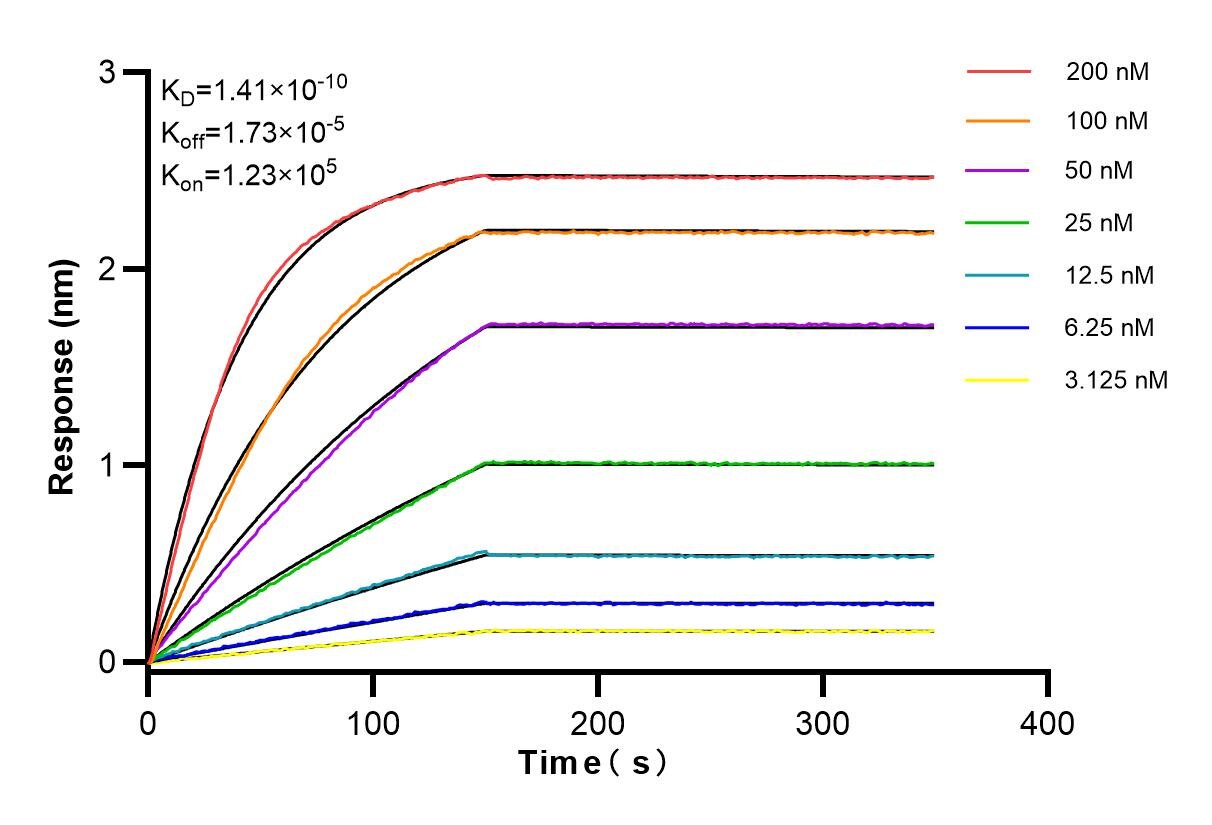Tested Applications
| Positive WB detected in | MKN-45 cells, HeLa cells, HepG2 cells, HuH-7 cells |
Recommended dilution
| Application | Dilution |
|---|---|
| Western Blot (WB) | WB : 1:5000-1:50000 |
| It is recommended that this reagent should be titrated in each testing system to obtain optimal results. | |
| Sample-dependent, Check data in validation data gallery. | |
Product Information
84632-1-RR targets GPAA1 in WB, ELISA applications and shows reactivity with human samples.
| Tested Reactivity | human |
| Host / Isotype | Rabbit / IgG |
| Class | Recombinant |
| Type | Antibody |
| Immunogen | GPAA1 fusion protein Ag0152 Predict reactive species |
| Full Name | glycosylphosphatidylinositol anchor attachment protein 1 homolog (yeast) |
| Calculated Molecular Weight | 68 kDa |
| Observed Molecular Weight | 60-68 kDa |
| GenBank Accession Number | BC004129 |
| Gene Symbol | GPAA1 |
| Gene ID (NCBI) | 8733 |
| RRID | AB_3672093 |
| Conjugate | Unconjugated |
| Form | Liquid |
| Purification Method | Protein A purfication |
| UNIPROT ID | O43292 |
| Storage Buffer | PBS with 0.02% sodium azide and 50% glycerol , pH 7.3 |
| Storage Conditions | Store at -20°C. Stable for one year after shipment. Aliquoting is unnecessary for -20oC storage. 20ul sizes contain 0.1% BSA. |
Background Information
GPAA1(Glycosylphosphatidylinositol anchor attachment 1 protein) is also named as GAA1. It is the most conspicuously hydrophobic of the known subunits of GPIT, and it may play a key role in substrate recognition. It is predicted to be a multispanning membrane protein of 67 kDa with seven transmembrane (TM) domains, a large lumenal domain between the first two TM segments, and a cytoplasmically oriented N terminus bearing a potential ER retrieval signal in the form of a diarginine motif(PMID:12052837).
Protocols
| Product Specific Protocols | |
|---|---|
| WB protocol for GPAA1 antibody 84632-1-RR | Download protocol |
| Standard Protocols | |
|---|---|
| Click here to view our Standard Protocols |





